Questões de Língua Inglesa da Fundação CESGRANRIO (CESGRANRIO)
Lista completa de Questões de Língua Inglesa da Fundação CESGRANRIO (CESGRANRIO) para resolução totalmente grátis. Selecione os assuntos no filtro de questões e comece a resolver exercícios.
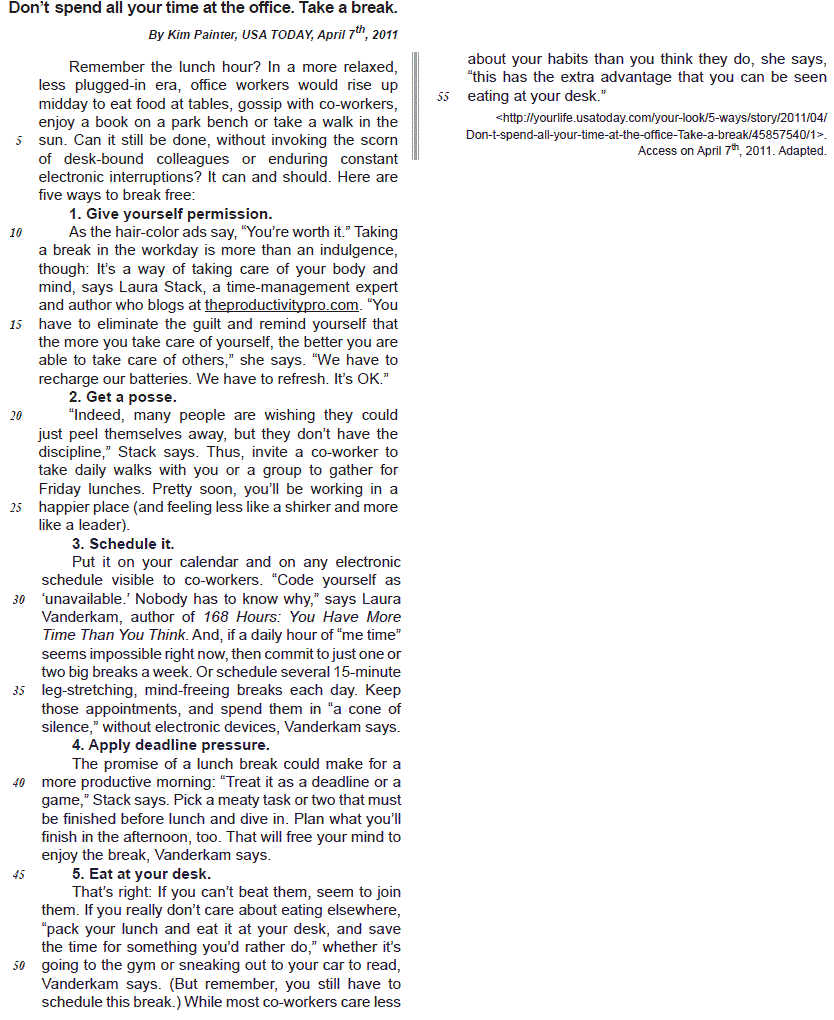
The boldfaced item can be replaced by the word in parentheses, without change in meaning, in
- A.
Taking a break in the workday is more than an indulgence, though: lines 10-12 (therefore).
- B.
Indeed, many people are wishing they could just peel themselves away, lines 20-21 (Nevertheless).
- C.
Thus, invite a co-worker to take daily walks with you lines 22-23 (So).
- D.
then commit to just one or two big breaks a week. lines 33-34 (however).
- E.
While most co-workers care less about your habits than you think they do, lines 52-53 (Because).
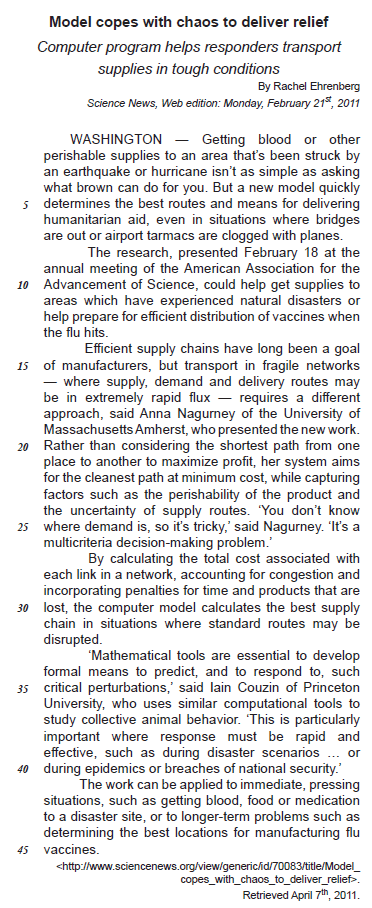
The expression in boldface introduces the idea of conclusion in
- A.
But a new model quickly determines the best routes and means for delivering humanitarian aid, (lines 4-6)
- B.
Rather than considering the shortest path from one place to another to maximize profit, (lines 20-21)
- C.
her system aims for the cleanest path at minimum cost, while capturing factors such as the perishability of the product (lines 21-23)
- D.
You dont know where demand is, so its tricky, (lines 24-25)
- E.
This is particularly important where response must be rapid and effective, such as during disaster scenarios... (lines 37-39)
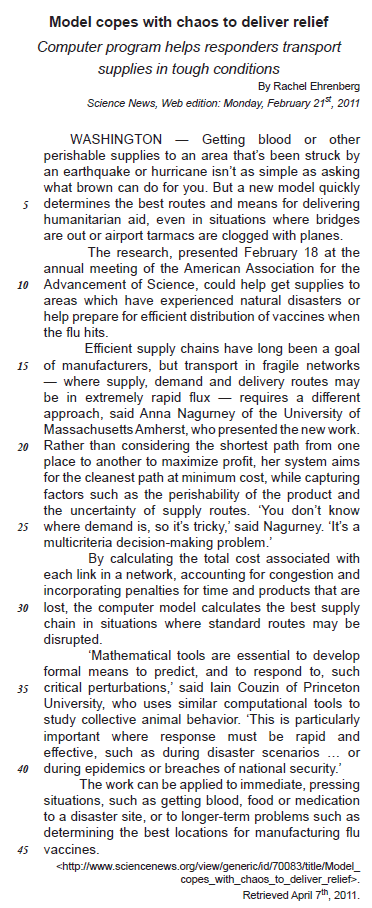
The computer model discussed in the text copes with chaos to deliver relief (title) and analyzes different factors. The only factor NOT taken in consideration in the model is the
- A.
probability of product decay or loss.
- B.
possible congestions in chaotic areas.
- C.
reduction of costs to increase profits.
- D.
unpredictability of status of certain routes.
- E.
most efficient route between geographical areas.
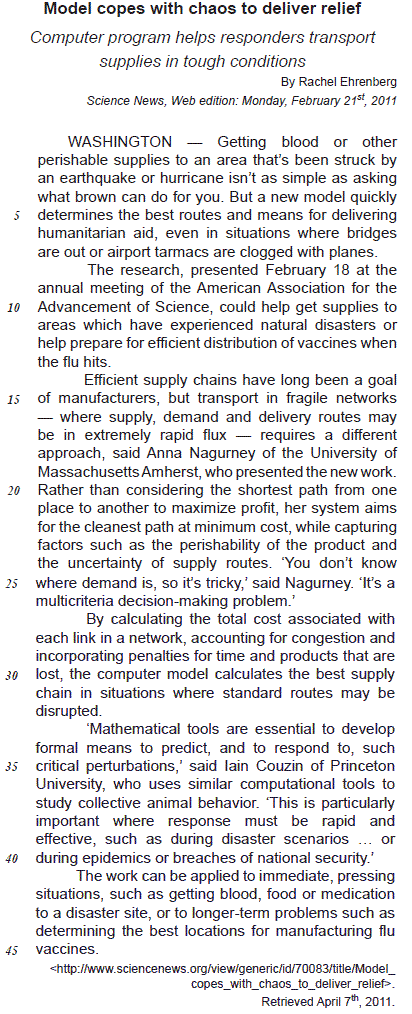
In terms of pronominal reference,
- A.
that (line 2) refers to blood (line 1).
- B.
which (line 11) refers to supplies (line 10).
- C.
where (line 16) refers to networks (line 15).
- D.
where (line 31) refers to routes (line 31).
- E.
This (line 37) refers to behavior. (line 37).

The authors intention in this text is to
- A.
warn organizations that 21st century employees should abandon creatonomy at work.
- B.
clarify the scope of innovation in business environments and restrain its relevance to certain jobs.
- C.
blame employees for distorting the original meaning of innovation for their benefit.
- D.
encourage employees to become more creative and innovative than the leadership team.
- E.
suggest that top leaders in industrial companies should avoid being innovative.

Based on the meanings in the text,
- A.
...Gauge... (title) cannot be replaced by estimate.
- B.
...issue... (line 8) is the opposite of announce.
- C.
...spur... (line 9) and stimulate are antonyms.
- D.
...outdistanced... (line 27) and exceeded are synonyms.
- E.
...deployed... (line 34) and dismissed express similar ideas.
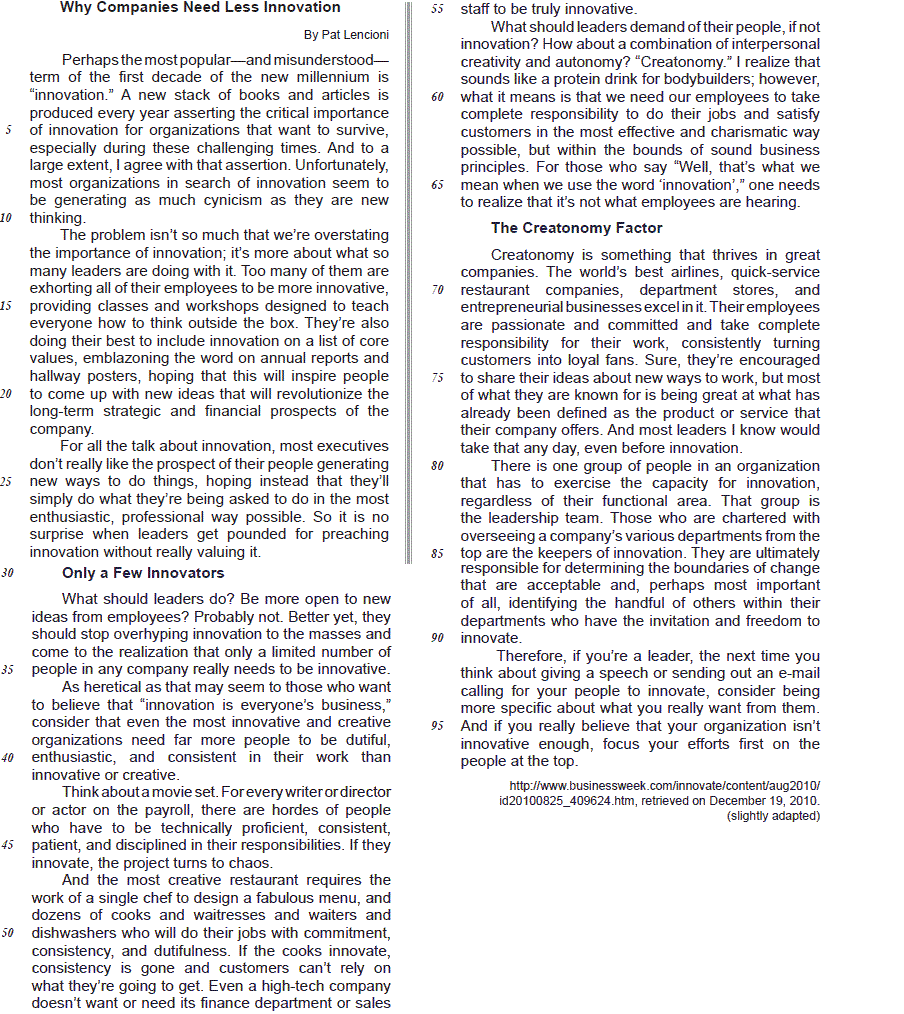
The fragment to teach everyone how to think outside the box. (lines 15-16) suggests that company leaders are
- A.
stimulating employees to adopt classic ways of thinking and behaving.
- B.
defending that all workers must learn to organize their materials in classified boxes.
- C.
showing their employees how to look further and see things from unconventional perspectives.
- D.
finding ways to criticize the business executives lateral thought processes which contradict standard ideas.
- E.
planning new courses and training sessions that will teach workers to follow all of the norms for out-of-company procedures.

Based on the meanings in Text I, the two words are antonymous in
- A.
...realise... (line 23) understand
- B.
...stretch... (line 42) bridge
- C.
...curb... (line 46) foster
- D.
...faltered... (line 77) halted
- E.
...blaming... (line 78) reproaching
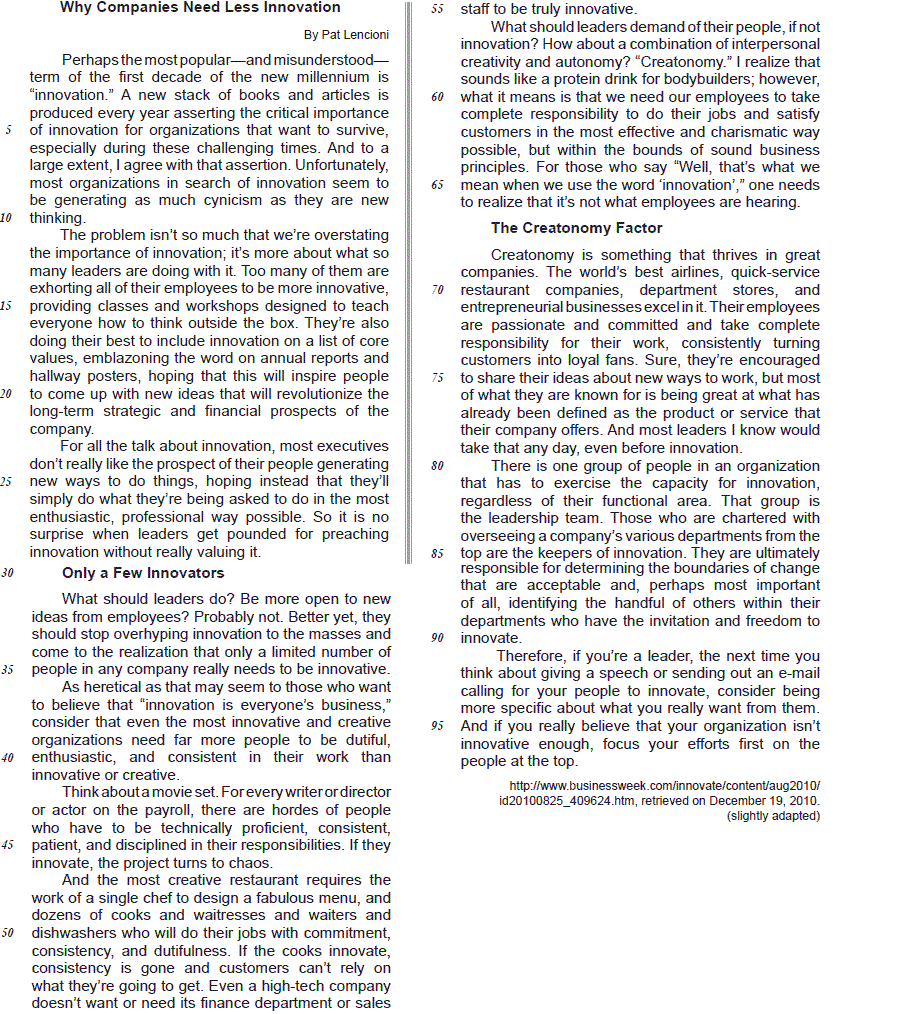
In only a limited number of people in any company really needs to be innovative. (lines 34-35), the fragment really needs to be transmits the idea of
- A.
minor ability
- B.
strong necessity
- C.
weak possibility
- D.
severe regulation
- E.
inevitable advice
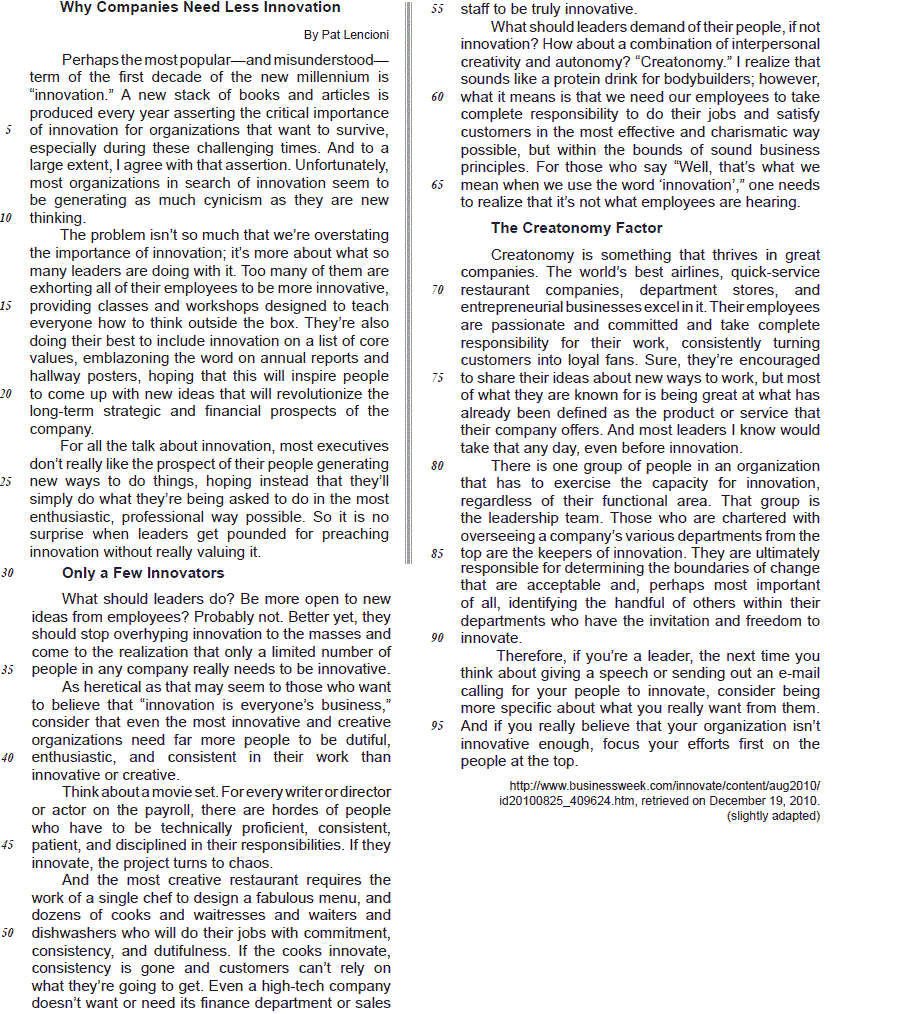
In the fragments this will inspire people to come up with new ideas that will revolutionize the long-term strategic and financial prospects of the company. (lines 19-22) and customers cant rely on what theyre going to get. (lines 52-53), come up with and rely on could be replaced in the text with, respectively,
- A.
suggest depend on
- B.
propose calculate
- C.
supply understand
- D.
borrow count on
- E.
discard believe in


